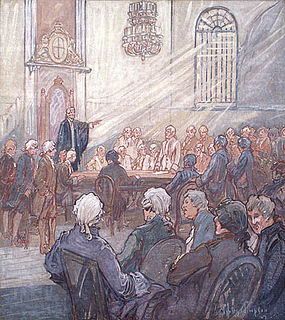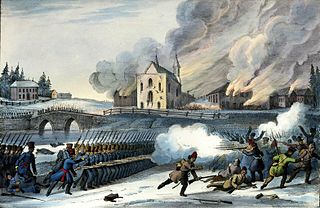Henry Georgen (January 28, 1787 – July 3, 1815) was a lawyer and political figure in Lower Canada. He represented Bedford in the Legislative Assembly of Lower Canada from 1814 to 1815.

The Province of Lower Canada was a British colony on the lower Saint Lawrence River and the shores of the Gulf of Saint Lawrence (1791–1841). It covered the southern portion of the current-day Province of Quebec, Canada, and the Labrador region of the modern-day Province of Newfoundland and Labrador.

The Legislative Assembly of Lower Canada was the lower house of the bicameral structure of provincial government in Lower Canada until 1838. The legislative assembly was created by the Constitutional Act of 1791. The lower house consisted of elected legislative councillors who created bills to be passed up to the Legislative Council of Lower Canada, whose members were appointed by the governor general.
He was born in Kingston, Quebec (now Ontario), the son of Christopher Georgen, of German descent, and Phebe Right, of United Empire Loyalist descent. Georgen moved with his family to Montreal, studied law and was called to the Lower Canada bar in 1810. He set up practice in Montreal. Georgen was a captain in the militia during the War of 1812. He died in office at the age of 28.

Kingston is a city in Eastern Ontario, Canada. It is on the eastern end of Lake Ontario, at the beginning of the St. Lawrence River and at the mouth of the Cataraqui River. The city is midway between Toronto, Ontario and Montreal, Quebec. The Thousand Islands tourist region is nearby to the east. Kingston is nicknamed the "Limestone City" because of the many heritage buildings constructed using local limestone.

Ontario is one of the 13 provinces and territories of Canada and is located in east-central Canada. It is Canada's most populous province accounting for 38.3 percent of the country's population, and is the second-largest province in total area. Ontario is fourth-largest jurisdiction in total area when the territories of the Northwest Territories and Nunavut are included. It is home to the nation's capital city, Ottawa, and the nation's most populous city, Toronto, which is also Ontario's provincial capital.

Germany, officially the Federal Republic of Germany, is a country in Central and Western Europe, lying between the Baltic and North Seas to the north, and the Alps to the south. It borders Denmark to the north, Poland and the Czech Republic to the east, Austria and Switzerland to the south, France to the southwest, and Luxembourg, Belgium and the Netherlands to the west.






